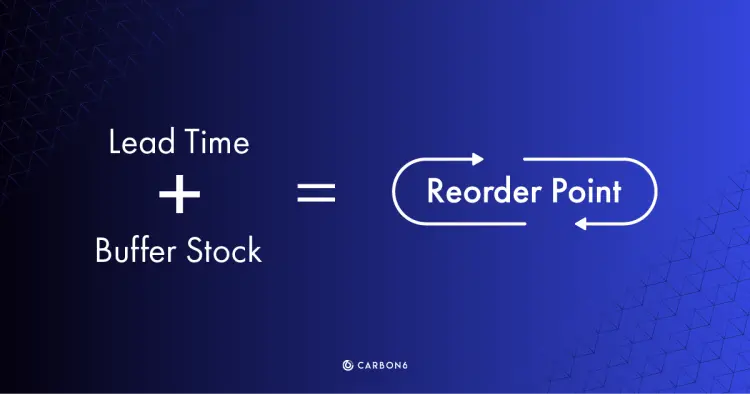I’m excited to continue the conversation about eCommerce profit margins and how to identify and “kill” your profit killers. In the first part of this three-part series on Amazon profit killers, we learned about the top three fees that are slowly, silently, but steadily sapping the profits out of your business.
The good news is that there are a few things you can do to start recovering that profit. As promised, in this post I will lay out a game plan for attaining greater business profitability amid rising costs.
Here’s how to get started.
1. Check Your Pulse
First and foremost, you need to check your vitals. Determine whether you have your basics in place. I’m talking about your inventory forecasting basics.
Nothing in this business is more costly than a significant inventory mistake. Stocking out is painful. Over-ordering is expensive. Doing either consistently can put you out of business. Getting good at inventory means avoiding stocking out and reducing holding and removal fees caused by overstocking.
But in order to get good at inventory management, you have to get the numbers right. There are a few numbers that are the foundation of any good inventory forecast.
The main factors you should get right are:
- Daily Adjusted Velocity
- Buffer Stock
- Reorder Point
Do you have these three things properly accounted for? Let’s talk about a couple of little tweaks that can make a real big difference.
Daily Adjusted Velocity
Adjusted velocity represents the average number of units sold per day during a given period. It is called “adjusted” because it factors in stockout days and non-recurring sales spikes. Accounting for these outliers when doing future forecasts will help you to find your true velocity, allowing you to order the right amount of inventory.
Daily adjusted velocity is the foundation upon which everything else is built within your forecast. Get that wrong and everything else will be wrong. Math is unforgiving.
When doing stockout calculations, the factors you need to consider are:
- Stockout Days. If you’re using FBA, you know that you’re not going to make sales if you don’t have stock.
Calculating future forecasts without properly analyzing your stockouts and putting stock out calculations properly into your formula can give you an inaccurate picture of what to expect and can lead to stocking out again in the future.
If you’re looking at a 60-day average and you stocked out for 10 of those days, your daily average will be significantly thrown off.
An incorrect calculation could predict that you are selling ten units less per day than you actually are, causing you to order less than you should. And if you’re ordering three months worth of inventory, that is a 900-unit shortage – a significant reduction in the amount of inventory that you should be ordering! This is one major reason many sellers stock out.
- Unusual Sales Interruption. This is the factor almost every system seems to miss. Was there an unusual interruption to your normal sales velocity? The day before you stock out, you often sell significantly less than you usually do. Let’s say you usually sell 100 units a day and the day before you stock out you only sell 23 units.
Then during a stock out Amazon finds a single unit and sells it, creating an “in-stock day” that, when thrown into a, say, 30-day average messes up that average considerably.A listing suspension could also cause your sales to suddenly drop even though you did not stock out. A stockout algorithm just looking at whether you had inventory at FBA would miss listing suspension sales interruptions every time when they really should be treated the same way that a stockout is treated.
Use Amazon monitoring tools like AMZAlert in order to get alerts on any product – including your competitor’s – that is running low on stock.
For example, inside of AMZAlert, you can set up availability alerts for your own products and for competing products that you want to track. You can adjust the stock availability threshold to 10 units or any value that makes sense for your monitoring purposes. If your ASIN goes below that threshold, you’ll get an alert. Then if your competitor’s product goes out of stock, you will get an alert, allowing you to quickly make adjustments to anticipate an increase in sales due to capturing more market share when your competitor stocks out.
Aside from stockouts, abnormal sales spikes should also go into your calculation, as they can throw your numbers off too.
For instance, one of my products was mentioned on a morning news segment about Christmas gifts and we made $40,000 in sales in one day! If, the next year, we had just looked at the hard numbers without factoring out that anomaly, we would have potentially ordered $40,000 in additional inventory that we likely wouldn’t have been able to sell, costing us thousands in excess holding costs.
It’s important to understand that whatever system you’re using, whether Excel spreadsheets or inventory software, you need to know your stockout factors in order to accurately determine daily adjusted velocity.
Buffer Stock
Buffer stock is essentially a false zero. It’s like the gas that’s left in your tank when your empty light comes on. You still have enough left to get to the gas station and fill up. That’s what buffer stock is – extra inventory you set aside for emergencies.
I often recommend having buffer stock at FBA and at your 3PL, especially if you cannot send extra inventory into Amazon due to low restock limits. A good rule of thumb is 45 days minimum inventory.
Why 45 days?
Because Amazon disburses your inventory all across the country so they can offer 1-2 days shipping to customers. When you have low inventory, it means you don’t have enough units to disburse properly across multiple locations. This might impact your geo-ranking in areas where you have little or no inventory. A little side note: geo-ranking is an algorithmic method Amazon uses to adjust search ranking results by geographic location.
Simply put, you want a proper dispersal of enough buffer inventory to ensure maximum visibility on Amazon search engine results pages across the entire region.
Strategize on which locations you should heavily market to and for which products. It’s also best to keep track of your inventory levels in those locations and send in additional units as needed to prevent stockouts. Lastly, monitor your ranking in different geographical locations to stay ahead of the curve.
Reorder Point (ROP)
One of the reasons why sellers stockout is because they don’t know how much inventory to order and by when. So, it’s important to know what the calculation is for your reorder point (ROP).
And it’s actually pretty easy.
The calculation for reorder point is:
Lead Time + Buffer Stock = Reorder Point

Where:
- Lead time represents the amount of time between when you place your inventory order and when the inventory is received at its final destination.
- Buffer stock is the extra inventory you set aside for emergencies.
If you want to take a deep dive into this topic, be sure to read ROP: How to Calculate for Restocking.
2. Stop the Bleeding
The next phase of my profit recovery method is to take a look at what you’re currently spending and find ways to cut costs.
If you are stocking out frequently or paying a lot in holding costs, you can try to facilitate better communication among your team members to minimize those by adopting a process I call Inventory-Minded Marketing.
It’s essentially a strategy that sellers adopt to coordinate their Inventory team and Marketing team. One of the most common problems I’ve noticed during my time consulting sellers regarding their inventory practices was that Marketing was not communicating with Inventory and so sellers were inadvertently marketing themselves into stockouts.
Inventory-Minded Marketing helps to avoid that. Here’s how:
- Provide a marketing plan to the inventory team. There is a plan template for this on the SoStocked free tools page. It lays out all of the details that need to go to the inventory team so they can check the marketing plan against the inventory available to make sure that you’re not going to stock out on a product by doing that campaign.
- Get the marketing plan vetted out by the inventory team. In this process, the inventory team looks at and compares the inventory to the marketing plan and gives you the thumbs up or tells you to avoid promoting a specific ASIN until more stock is available.
- Send reports from the inventory team to the marketing team. Inventory should take a proactive role by providing reports that useful give data to marketing. These reports include:
- Stockout Risk Report. Predict products that may be at risk of stocking out by looking at the amount of inventory you have available and how quickly you’re selling. Then, send the report to the marketing team to see if they can avoid that stockout.
- Slow Sellers Report. Use this report to track products that you need to move quickly before they start incurring holding costs. These products aren’t complete duds, but they are at risk of becoming so.
- Liquidation Report. Set a minimum sales velocity for each of your products, and anything that falls below that range may be considered for liquidation. Don’t forget to factor in the lost opportunity cost. If you can recover that capital and invest it into something that will make you more money, that should be a consideration when making the decision of how best to handle this stock.
- Overstock Report. This report will often include several products, such as those from both slow seller and liquidation reports, but it could also include your best sellers. The marketing team should figure out a plan to move these products more quickly to reduce your holding costs which, in turn, increases your profit margins.
With Inventory-Minded Marketing, marketers can incorporate any inventory plans into their own marketing strategy to not just increase sales and avoid stockouts, but also to decrease holding and removal costs associated with slow sellers and overstock.
Stay Tuned for Part 3
With the two steps above, you’ll begin to regain your margins across your entire catalog. Sellers like you have been able to recover tens of thousands of dollars with just these two tactics.
However, I want to go one step further.
In my final installment of profit killers and profit optimization, I’ll lay out a few techniques that can put thousands back in your pocket with just a few shifts in how you operate. These are strategies that smart aggregators are using to massively increase the profitability of their entire book of brands, creating instant equity in the businesses they acquire.
It’s the cherry on top of my 3-step profit recovery method and is designed to help you to regain the capital and cash flow you need to scale further faster.
Until next time…








